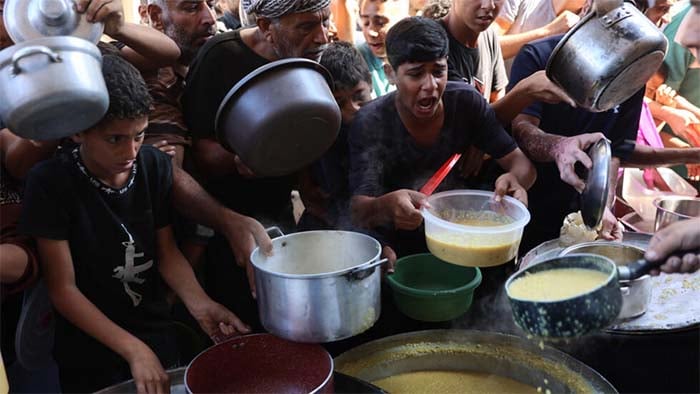
ROME, Oct 31, 2024 (BSS/AFP) - UN food agencies warned Thursday of deadly hunger levels in 16 "hunger hotspots" in coming months, with the Palestinian territories, Sudan and South Sudan, Mali and Haiti of most concern.
Conflict is driving most of the acute food insecurity in all those areas analysed by the Food and Agriculture Organization and the World Food Programme.
Extreme weather was a major factor in other regions, while economic inequality and high debt in many developing countries are hurting governments' capacity to react, according to the joint report covering forecasts for November 2024 to May 2025.
Humanitarian action was urgently needed to prevent starvation and death in the Palestinian territories, Sudan, South Sudan, Haiti and Mali, said the report, based on research by experts from the two Rome-based United Nations agencies.
"Without immediate humanitarian efforts and concerted international action to address severe access constraints and advocate for the de-escalation of conflict and insecurity, further starvation and loss of life are likely" in those spots, it found.
Of "very high concern", are Nigeria, Chad, Yemen, Mozambique, Myanmar, Syria and Lebanon, it said. In all those countries, conflict was either a major driver of hunger, or a contributor.
With its focus on the most severe and worsening countries, the UN agencies said the report did not "represent all countries/territories experiencing high levels of acute food insecurity".
The agencies said 2024 marked the second consecutive year of declining funding for humanitarian assistance, while 12 appeals faced funding shortfalls of more than 75 percent, including for Ethiopia, Yemen, Syria and Myanmar.
- Worst case ahead? -
A surge in hostilities in the Gaza Strip has raised concerns that the "worst?case scenario" of famine will materialise, said the report.
It estimated that 41 percent of the population, or 876,000 people, will face "emergency" levels of hunger from November until the end of April.
Nearly 16 percent, or 345,000 people, will experience the most serious "catastrophic" levels.
As of mid-October, 1.9 million people in Gaza have been displaced, it said.
In Sudan, hundreds of thousands of people displaced by conflict will face famine in the Zamzam camp in North Darfur, predicted the report.
In South Sudan the number of people facing starvation and death are projected to have nearly doubled in the four months between April and July 2024 against versus the same period last year. But those numbers are expected to worsen from next May with the lean season between harvests.
Over a million people have been affected by severe flooding this month in South Sudan, found the report, a chronically instable country plagued by violence and economic stagnation.
Anarchy in Haiti, together with economic crisis and hurricane activity means that critical levels of hunger are likely to worsen in the impoverished Caribbean state, the agencies said.
Escalating conflict in Mali, where the UN withdrew its peacekeeping mission in 2023, will likely worsen already critical levels. Armed groups are imposing blockades on towns and roads impeding humanitarian aid, the agencies said.
The direct and indirect effects of conflict on food insecurity are vast, found the report, going well beyond the destruction of livestock and crops.
Conflict forces people to flee their homes, "disrupting livelihoods and income, limiting market access, and resulting in price fluctuations and erratic food production and consumption," the report said.
In regions of high concern, extreme weather caused by the possible recurrence of La Nina -- a naturally-occurring climate phenomenon that can trigger heavy downpours or worsen droughts and heatwaves -- could exacerbate hunger conditions, said the report.